Indigenous communities in the Ecuadorian Andes are reviving ancestral fiber arts with alpaca wool to escape the cycle of poverty and protect the unique highland ecosystem in which they live.
María Juana Chaluisa’s description of her home, the Quechua community of Apahua that sits in the crook of two snow-capped Andean volcanoes, barely hints at the harshness of it, or the beauty. “This is 4,200 meters [almost 14,000 feet] above sea level,” she said in a shy whisper. “It’s cold here."
Living between the Cotopaxi and Chimborazo volcanoes at an altitude significantly higher than Peru’s Machu Picchu marks Chaluisa, 49, with the ruddy cheeks that come from constant exposure to cold winds. Apahua lies in a rare ecosystem called the paramo, where low temperatures and high humidity create a bone-deep chill. In these altitudes, one breathes in about 40 percent less oxygen than at sea level. Most people, even locals from nearby but lower Quito, are struck by altitude sickness at this elevation, beset by headaches, nausea and fatigue.
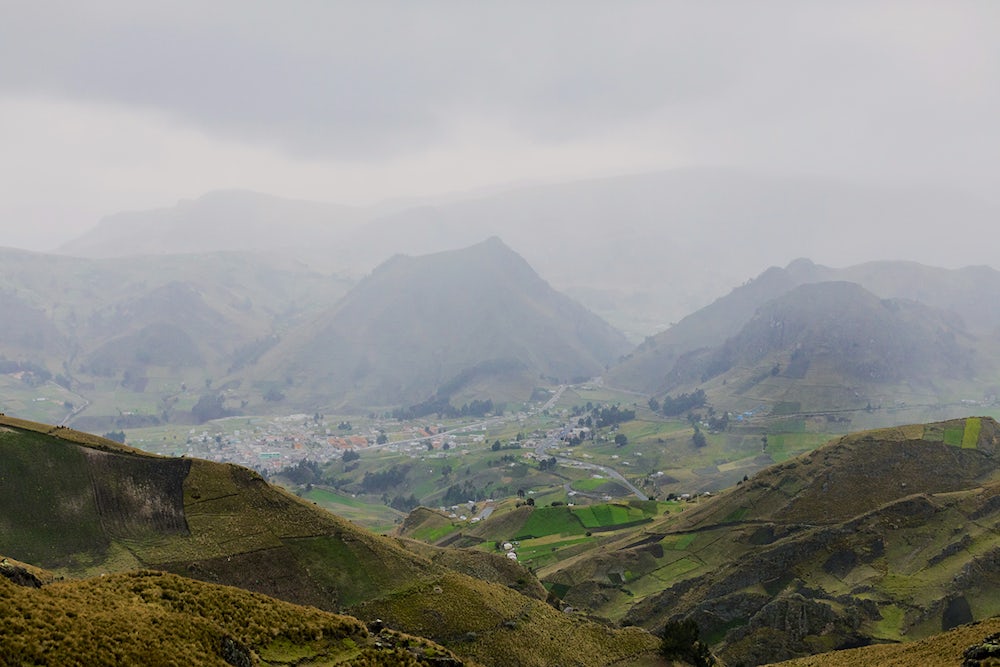
In Ecuador, Spanish colonists either enslaved or banished Quechua people from more livable climates to these higher altitudes in the Andes mountains, and many communities remain there to this day, inheriting the legacies of colonialism in the form of permanent displacement and extreme poverty. Most people in Apahua never finished grade school, struggle to feed their families, and have little or no access to proper healthcare. The place feels forgotten, with little infrastructure or opportunity.
Alpacas are uniquely suited to the Andean highlands, with padded feet that do not disturb the ground beneath them and a gentle way of nibbling the tops of the grasses, rather than yanking their food out by the roots. Their puffy coats protect them from the cold and can help fellow highlanders survive as well. Since pre-Incan times, Quechua communities have been knitting, crocheting and weaving alpaca fiber into the iconic clothes and blankets necessary for survival in the Andes.
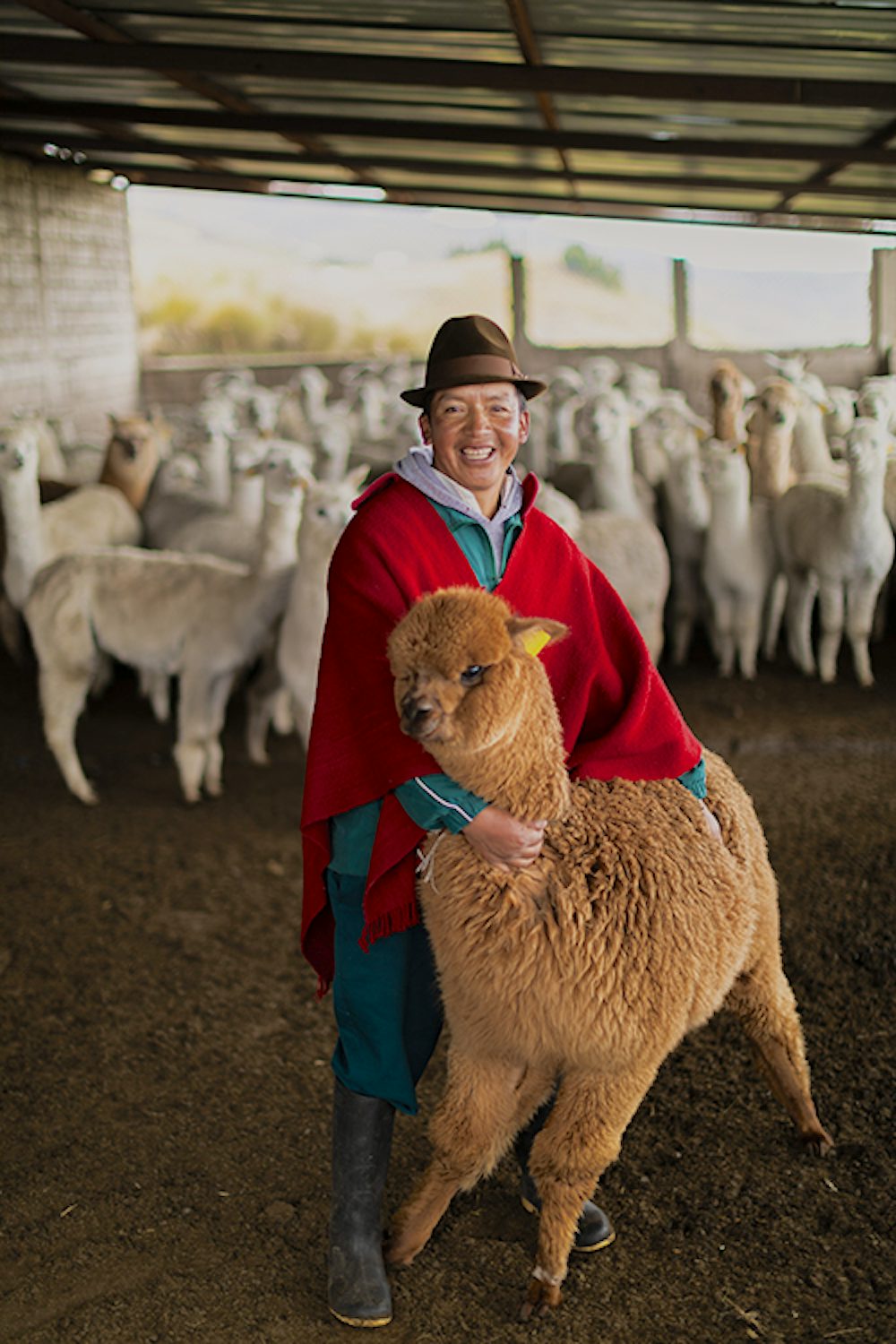
But this bleak outlook is brightening as Chaluisa and her neighbors blaze a path out of extreme poverty alongside an animal that pre-Incan indigenous people bred and Quechua people brought with them in their exile. Alpacas and the Quechua have survived together in the Ecuadorean Andes for hundreds of years. Now, Heifer project participants are capitalizing on their relationship with these unique animals to build a healthier and more hopeful future.
“I can tell you, life was getting harder and harder,” Quishpe said. “We needed a lot of things. We needed things to supply our family, [provide] an education for my children, to purchase school supplies. We couldn’t afford them.”Paco Quishpe, 46, hopes alpacas will accompany his community out of poverty, as well. Quishpe is the project secretary in Apahua, one of nine struggling communities where Heifer is supplying improved breeds of alpacas, training in animal care, loans and marketing expertise.In some ways, the unique connection between the Andean people and alpacas goes even deeper. Colonial Spaniards did not value alpacas, preferring the merino sheep they brought from Europe, and they slaughtered thousands of alpacas in an attempt to destroy native people’s livelihoods. But as Quechua people fled to higher elevations, they brought alpacas with them. “Just as the indigenous were sidelined, expelled, to the coldest places, so both the indigenous and the alpacas had to adapt to this environment,” said Myriam Merino, the alpaca value chain specialist for Heifer Ecuador. “So that’s why they are so affectionate with these animals, who have accompanied them in their poverty.”
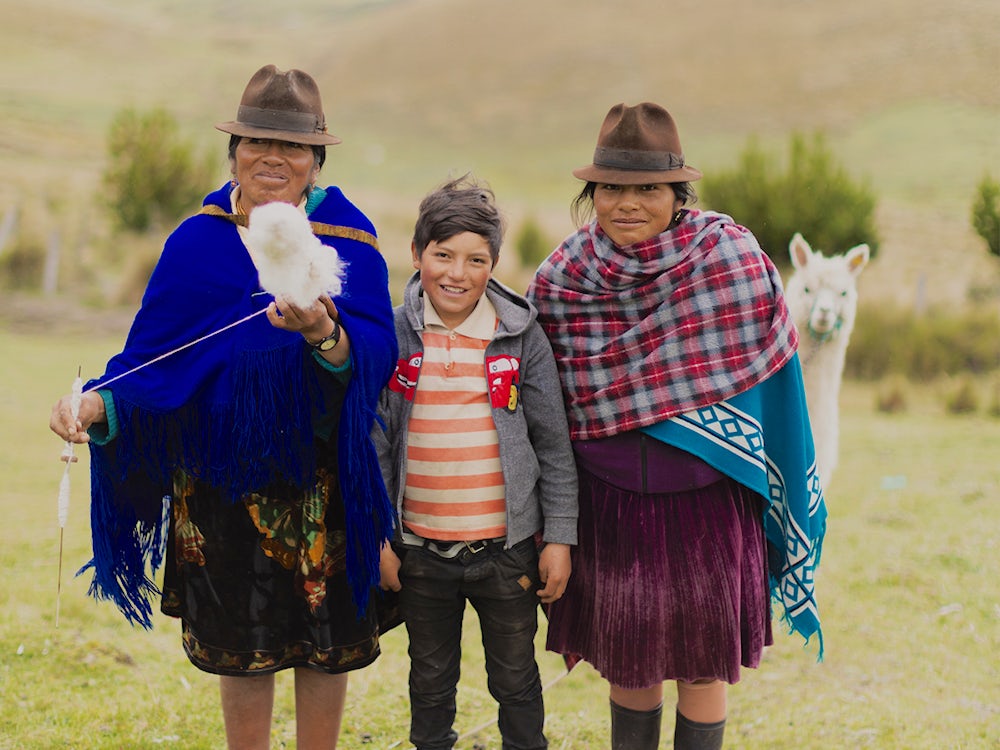
“They could be breeding stock, they can give us fiber, we can eat the meat and they provide fertilizer for our crops,” Quishpe said of the alpacas. “They’re good for the environment of the paramo, which is the source of water. It’s important for that.”Frosts and unpredictable rains make vegetable farming at such high elevations risky. And when potatoes and fava beans wither in the cold, unpredictable climate, the people in Apahua have nothing to eat or sell, he said. Cultivating alpacas for their fleece is a far more reliable business plan and one that preserves the delicate high-elevation ecosystem that’s the source of most of the country’s drinking water.
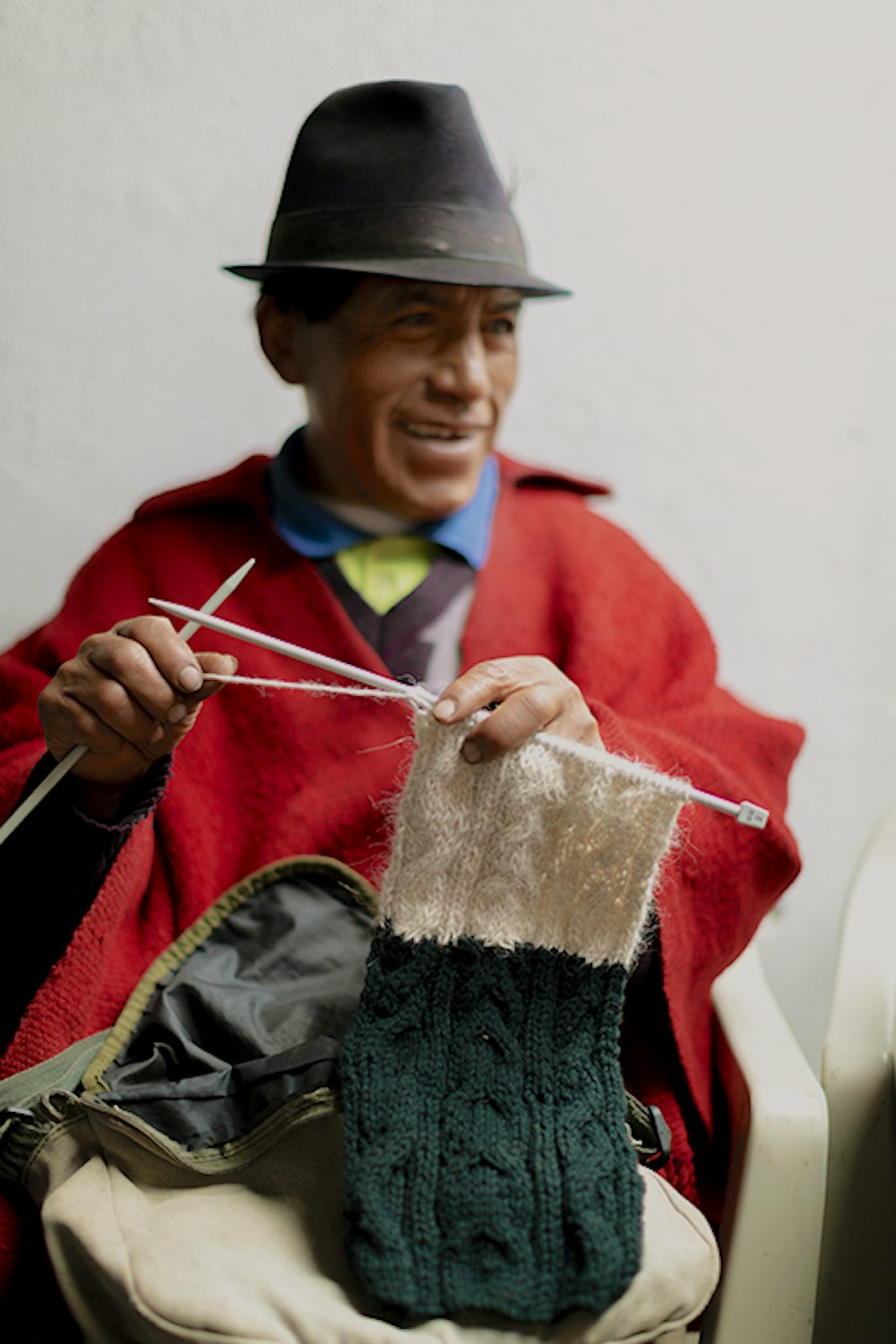
Building a full-scale alpaca fiber enterprise and establishing a steady market for the finished products will take time, and community members can’t afford to wait. So Heifer helped each community set up a revolving fund that project participants are tapping to buy guinea pigs, rabbits, chickens and sheep to raise for food and to sell.
Though spinning and knitting in this region are traditionally done by women, the men in Apahua are also picking up their needles so they can help churn out marketable alpaca handknits. José Pedro Pablo Cuzco, 65, left school after third grade but loves to learn and was eager to start knitting. With this new skill, he hopes to generate income and opportunity for future generations.At the same time, project participants are building bigger, healthier, more productive alpaca herds by mixing animals they already had with breeders Heifer provided. They’re also brushing up on their crafting skills.
“Our dream for the future is opening the door at least for our children, so they learn and then set up a company so that our children can work at that enterprise,” Pablo said. “I’m ending my life, but I will open doors for the young people to move forward.”
Inés Chaluisa, 25, always loved alpacas for their cloud-soft fleece, docile nature and teddy-bear looks. Now, she is learning from her mother how to spin alpaca wool into yarn, and she goes to Heifer-sponsored workshops to learn knitting techniques. Like most women in the community, Inés Chaluisa now keeps a spinning or knitting project in hand at all times.
Down the road in the community of Sumac Llama, master knitter María Humbelina Miñarcaja teaches young women what she knows. She’s a natural teacher, brimming with confidence and enthusiasm. “I have always been a leader,” she said. “I don’t know [why], but I like to. Ever since 20 years ago, when I was a kid. I like to lead people, I like to do crafts. I can do any craft.”
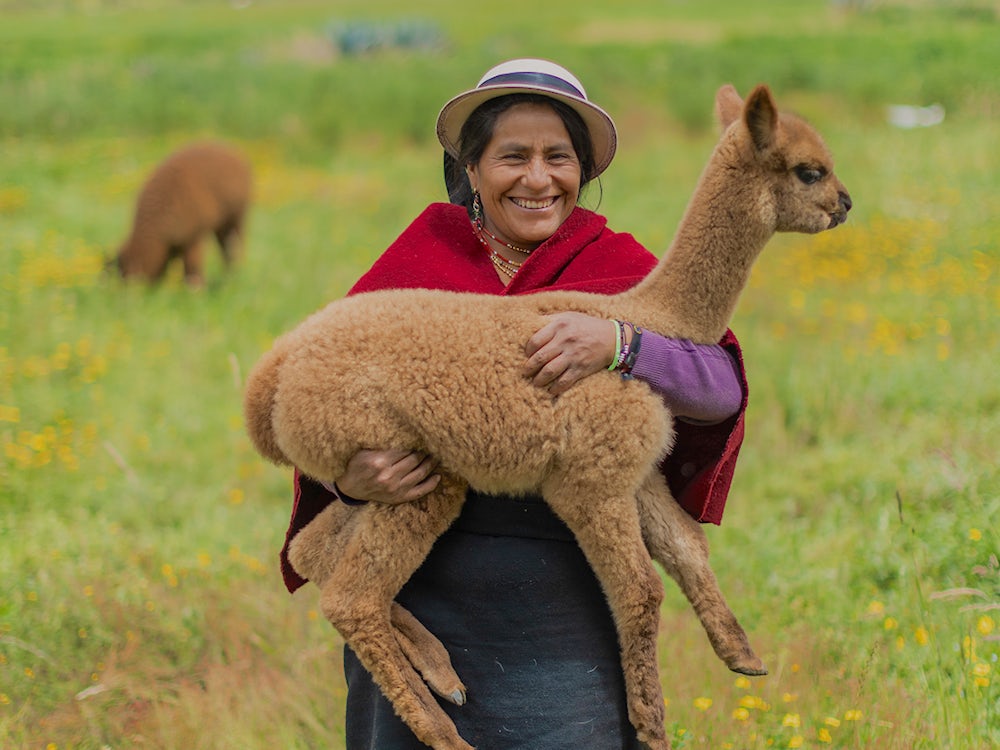
Miñarcaja is hoping the alpaca project will bring in money she needs to care for a household that includes herself, her daughter and her parents. “We haven’t had everything. But we struggle, we fight,” she said. “We work with farming with my parents. I’ve also raised guinea pigs. And now I’m also raising the alpacas and the sheep.
The women in her organization that are best at spinning make the yarn, and Miñarcaja knits garments and teaches others her patterns and techniques. She has taken on this project in addition to being a single mother, an active member in several community organizations, a farmer and a caregiver for her aging parents. It is a lot of responsibility, but she rolls with the punches. “Well what can I do? If I’m tired, I’m tired. I’m one year short of a high school degree, but then I had to get to work.”

Miñarcaja’s group has 48 members, only 10 of whom are men. Many of the men in her community left to look for work. When it comes to alpacas, the women are in charge. “It feels better, because we all have the courage to not be used, and women can speak too. We know how to speak. We know how to get ahead,” she said. It’s a change from how things used to be. “We don’t have to depend on the men. We are working and we get money.”
Knitting was old hat for Miñarcaja, but even she is finding opportunities to learn new skills as part of the Heifer project. Thanks to a training in Peru, she can now expertly classify the alpaca fiber by quality, ensuring coarser fibers are used in blankets and weavings, while finer, softer fiber goes into the clothing projects that can fetch good prices. Miñarcaja now she teaches members of other organizations how to sort alpaca fiber.
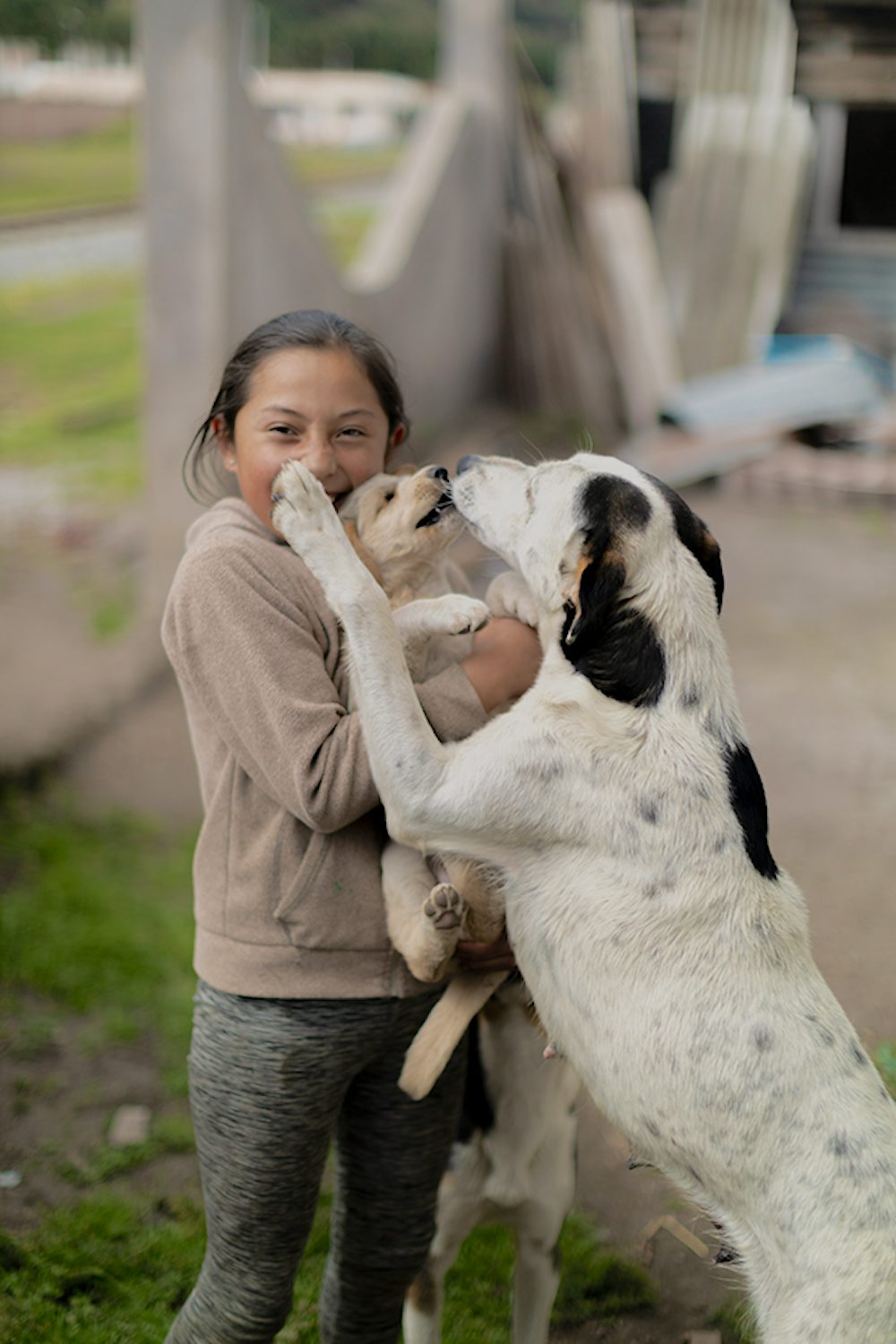
Finding time to knit between all of her teaching and caregiving isn’t easy. Despite waking at 5 a.m., Miñarcaja is often not done with her work until 10 p.m. “I will knit when I’m not so tired until 11 o’ clock at night,” she said. But her dreams drive her work ethic.
“My dream would be to have a [company] in my community, like in Peru, but in Ecuador,” Miñarcaja said, referring to Tres Alpaquitas, a group of artisans in Peru who launched a successful alpaca knitwear company. “An enterprise of women who are taking care of the alpacas and making the products.”
She also hopes to support her daughter’s dream of becoming a veterinarian by making enough money to send her to school. “That’s why she has all those dogs,” Miñarcaja laughed. “She doesn’t want us to get rid of any of them. They give her milk and cookies, nutritional cookies, at school, and she smuggles them home to give to the dogs.”
Micaela Castro Sisa, 48, struggled a long time before the alpaca project. “I live by myself because my husband was abusive. So I gave up on him. I live by myself with my kids. I’ve been separated for eight years. That’s why I’m happy to have this work. And with that, I can keep this house. And I’m still alive.”
Castro has six children, one of whom is disabled. “Taking care of the kids, paying for their school expenses, even now it’s hard. Because I’m a woman without any help, I can’t afford to give the kids bus fare to get to classes, and food costs, we can’t make enough money as women. “
.jpg?or=0&q=60&crop=faces,entropy&auto=format&fm=jpeg&shad=50&vib=20&duotone-alpha=40&duotone=000000,2CFFD4C6&w=1000)
She is glad to have a new option through the Heifer project. Castro has been spinning wool her whole life, “ever since I was a little girl,” she said. Now she’s teaching others this delicate skill to others so they can team up to produce and sell as much yarn and handknits as possible.
This opportunity to use her skills to provide for her six children all she wanted, Castro said.
“Everything is good when there’s enough. Nothing is difficult. We have to work so we have daily bread.”
